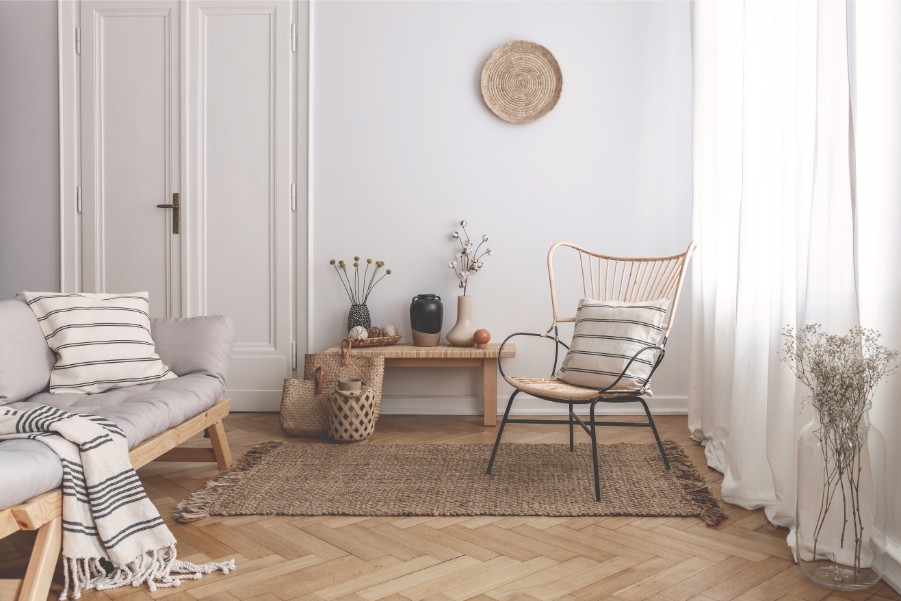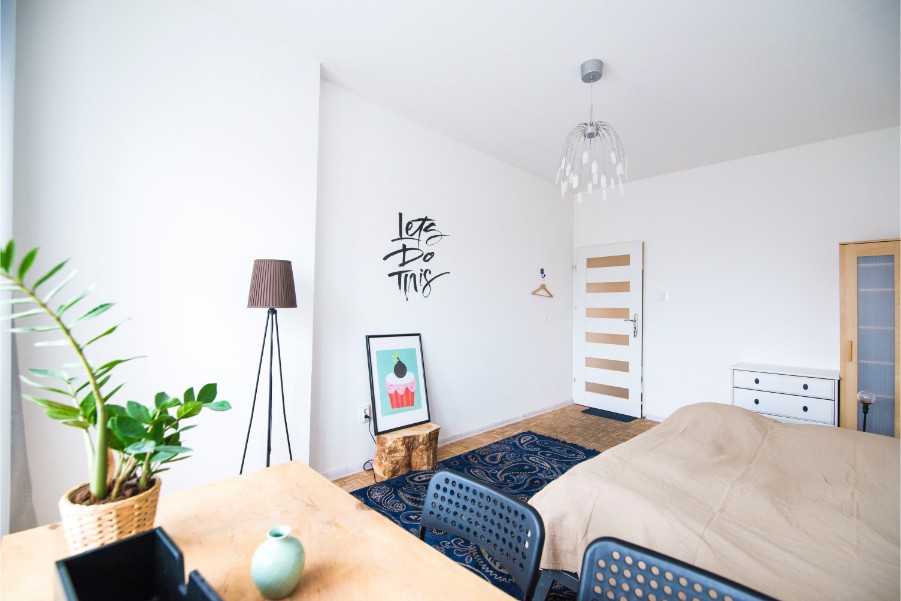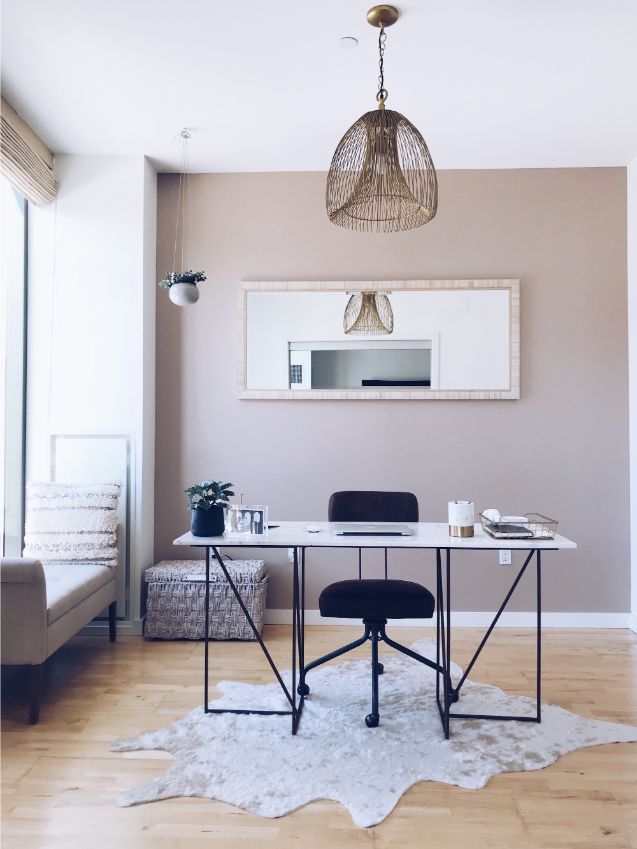Why You Need a Whole House Color Palette
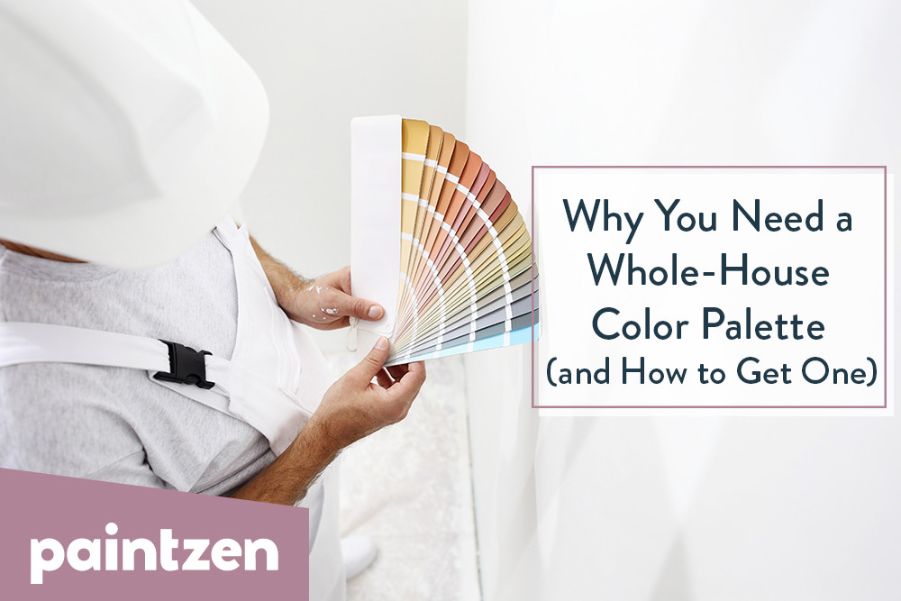
One of the things that set apart a professionally designed home is the whole house color palette. Made to flow from room to room, the chosen palette paint colors give the house a polished, coordinated look that acts as a foundation for the furnishings and accessories.
If you want to get this look without the designer price tag, follow these simple tips on how you can create a whole house color palette.
Start With an Inspiration Piece
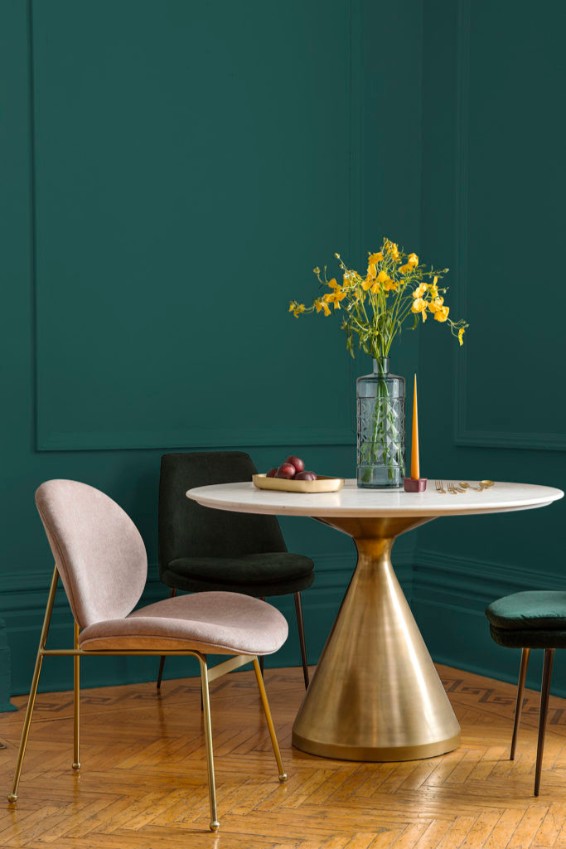
The pros always start with one thing – a piece of fabric, a patterned rug, or even a certain feeling – as the inspiration for their design.
In this room, the designer loves bold colors, choosing a deep green for this dining room. Maybe the inspiration stemmed from the bold colors of the floral centerpiece.
Figure In Your Fixed Elements
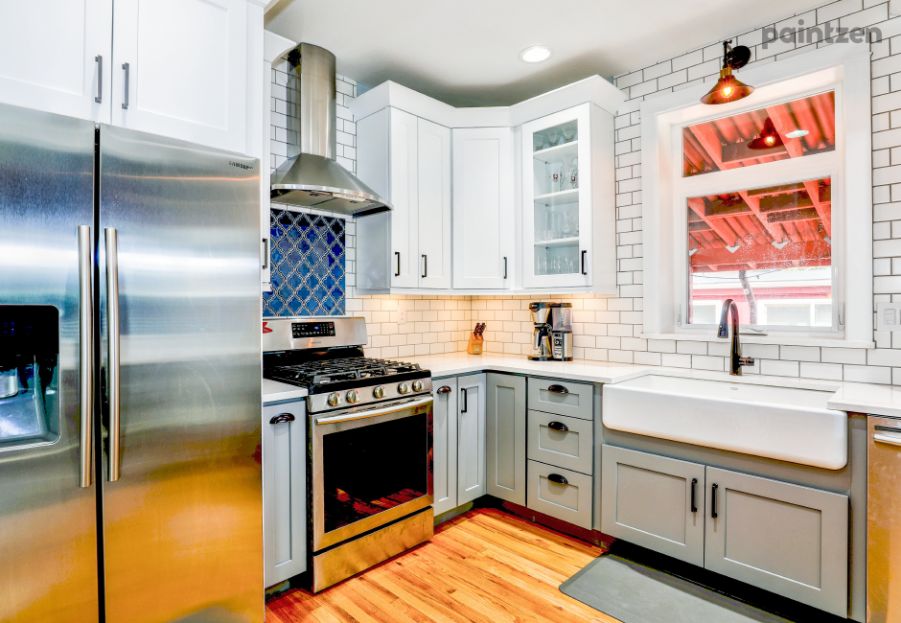
Once you have your starting point, take a look at the room. What are its permanent, fixed elements — the things that won’t change, regardless of furnishings and accessories? We’re talking about cabinets, countertops, stone fireplaces, and tile tub surrounds.
Does your inspiration piece work well with the fixed elements? You may need to tweak your color palette slightly, if not.
Remember: Your palette should make sense even when the rooms are empty. The bones of the space, fixed elements, and wall colors should carry the design load.
Choose Three Colors
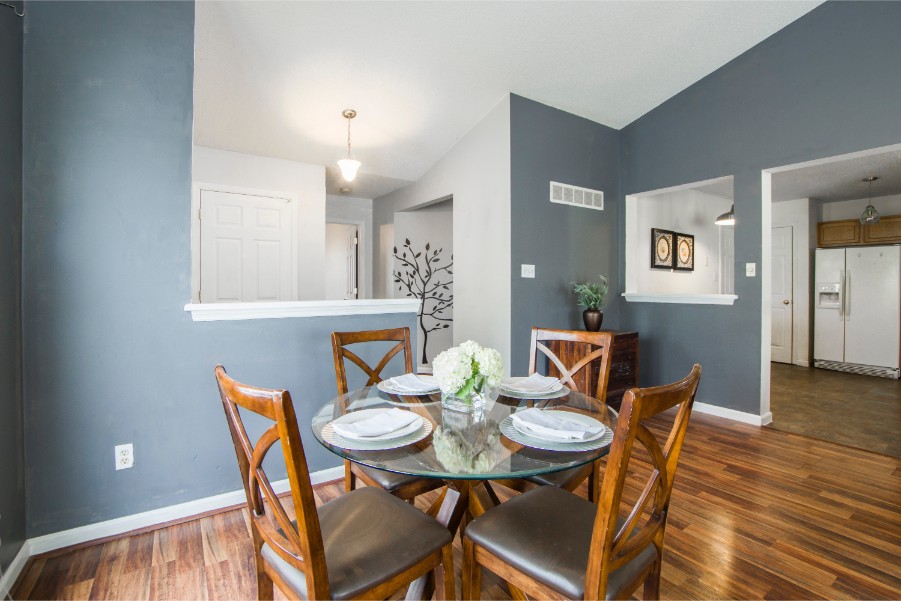
How many colors is a whole-house palette? Some designers say three; others say five, and still, others say (or use) more in their own designs.
For a beginner, three colors is a good number. This gives you enough visual interest variation, but it isn’t so overwhelming that you get lost in the color choices.
As you work with the colors, repeat them at least twice in each space, to create a sense of flow from room to room.
PPG Paints offers a special collection of paints called the Harmony Collection, which is curated palettes designed so that all the colors work together. This is a great place to go if you don’t want to worry about finding the perfect complementary shades – all the work is done for you! One of our in-house color consultants can walk you through the process.
Understand the Undertones
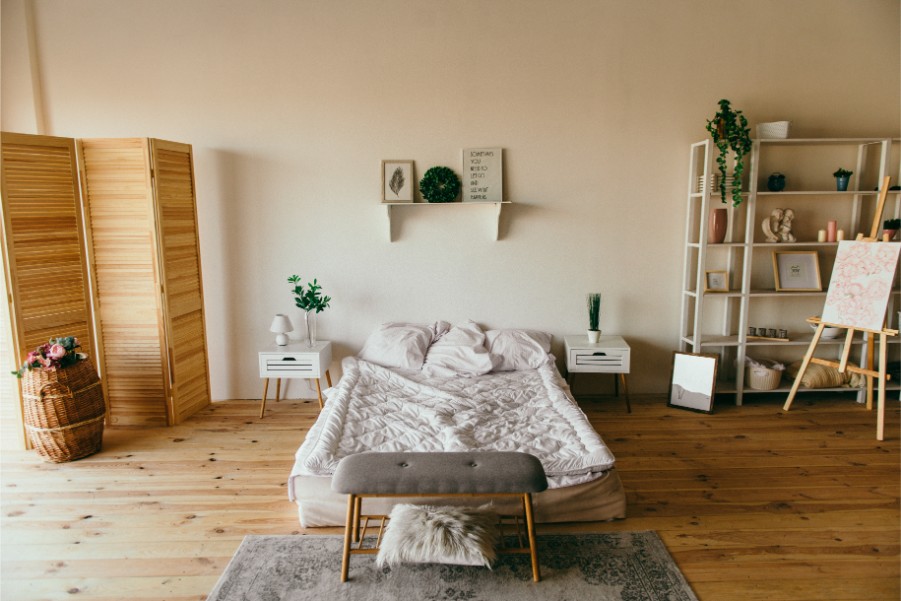
Undertones are hidden colors. They occur when you mix two or more hues to create a third color. For example, the ivory in your kitchen might blend white, brown, and yellow. You only see the white, but the brown and yellow undertones show through, especially once that ivory is on the wall.
Undertones can be warm (red, orange, yellow) or cool (blue, green, purple). Make sure your color palette has similar undertones and that the undertones blend with the fixed elements.
The easiest way to do this is to compare each color to a true color on the color wheel. A true white, red, blue, or yellow won’t have undertones, so when you hold your color against them, you can instantly see how your color “reads” against them.
You can also ask a Paintzen design expert for help. (We offer color advice and over-the-phone consultations free of charge for your convenience!) It takes practice to recognize undertones, so until you’re confident in your abilities, ask for help. Just knowing about them and talking with a color expert can save you a lot of frustration and expense.
Follow the Sight Lines
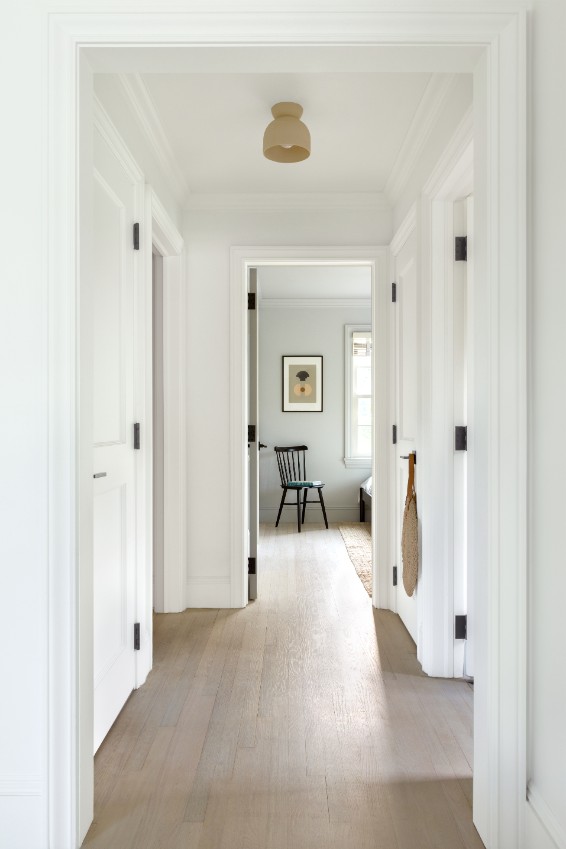
Paint your paint chips on large poster boards, hang them where they’re visible from other rooms. Walk through the house and see how they hold together – does one need to be a little darker or lighter? Would one work better in the kitchen than the hallway? Move them until the flow of your floor plan is right.
If you’d rather not paint samples, order some 8×8 swatches of your chosen colors. (We can mail you color swatch samples free of charge!)
Don’t Forget the Lighting
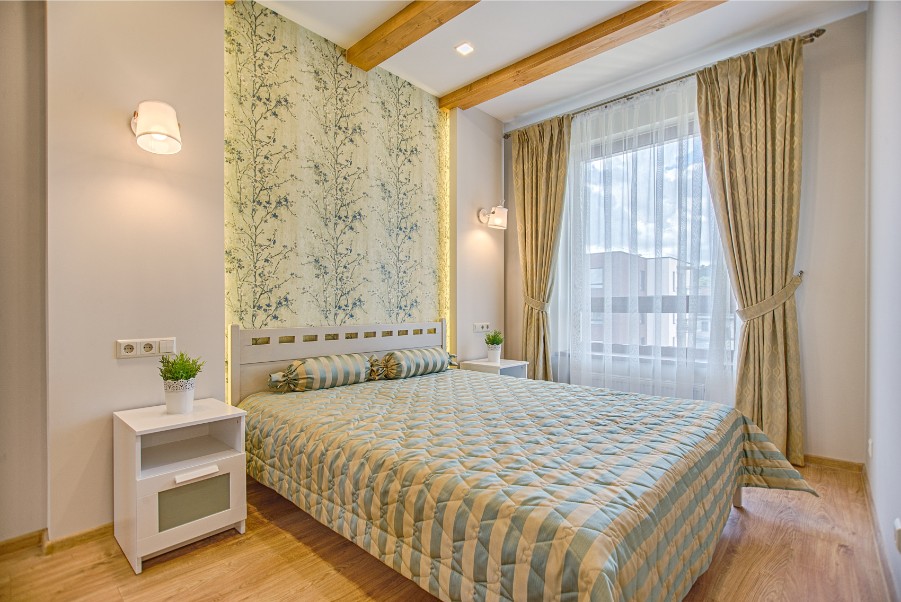
Lighting plays an important role in color selection. Live with your sample paint boards for several days or weeks and study them during the day and night.
Will you need to change your window treatments to let in (or block) more light to get the effect you want? Should you bring in more lamps? Or choose a lighter color for a room that tends to be darker?
Choosing a whole-house color palette takes some time and planning. It may seem overwhelming at first. But if you keep these tips in mind, you can create an interior design that looks like it was done by a pro — for a fraction of the cost!
Get more ideas for whole-house paint palettes in our samples gallery.
All set with your palette? Don’t wait any longer – get a free, instant quote to have a local Paintzen crew paint your home’s interior or exterior in your chosen palette. Just click here to get a free and instant online quote.

